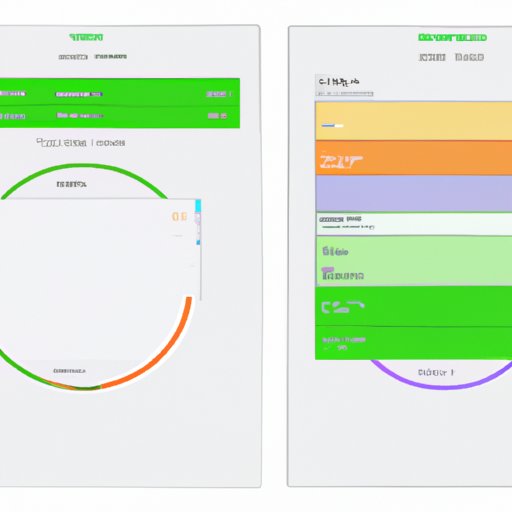Introduction
Financial statements are documents that summarize a company’s financial results. They provide a snapshot of a company’s overall financial performance, including its assets, liabilities, and equity. By presenting financial statements, businesses can gain insight into their financial position and make informed decisions about their operations.

Outline the Components of a Financial Statement
A financial statement typically consists of three main components: the balance sheet, income statement, and cash flow statement. The balance sheet shows a company’s assets, liabilities, and equity. The income statement shows a company’s revenues and expenses for a given period of time. The cash flow statement shows how cash inflows and outflows are related to operating, investing, and financing activities.

Explain the Different Types of Financial Statements
Financial statements can be presented in different formats, depending on the purpose. Consolidated financial statements include the accounts of both the parent company and its subsidiaries. Unaudited financial statements are prepared without the review of an independent auditor. Audited financial statements are reviewed by an independent auditor and include an opinion of the auditor regarding the accuracy of the financial information.
Demonstrate How to Read and Interpret Financial Statements
To interpret financial statements, it’s important to analyze the assets, liabilities, and equity. Analyzing assets involves looking at the composition of current assets and long-term investments. Analyzing liabilities requires understanding the sources of long-term debt and other obligations. Analyzing equity involves understanding the sources of capital, such as retained earnings and stock.
Show Examples of Financial Statement Presentations
To help illustrate the concepts outlined above, it’s helpful to look at sample financial statements. A sample balance sheet shows the composition of a company’s assets, liabilities, and equity. A sample income statement provides information on a company’s revenues and expenses. And a sample cash flow statement shows how cash flows are related to operating, investing, and financing activities.
Describe Commonly Used Financial Ratios
Financial ratios are used to measure a company’s performance. Liquidity ratios measure a company’s ability to pay its short-term debts. Profitability ratios measure a company’s ability to generate profits. Efficiency ratios measure a company’s ability to manage its resources efficiently.

Provide Tips on Making Financial Statements Easier to Understand
When presenting financial statements, it’s important to use clear language and make sure data is accurate. Visual aids, such as charts and graphs, can also help make financial statements easier to understand. Additionally, there are online tools available that can help simplify the process of creating financial statements.

Discuss the Benefits of Presenting Financial Statements
Presenting financial statements can have several benefits. It can improve decision making by providing a better understanding of the financial position of a company. It can also increase transparency by providing a clearer picture of a company’s finances. Lastly, it can enhance credibility by demonstrating a commitment to responsible financial management.
Conclusion
Financial statements provide valuable insight into a company’s financial position. By understanding the components, types, and examples of financial statements, businesses can better prepare and present them. Additionally, by utilizing commonly used financial ratios and following tips for making financial statements easier to understand, businesses can reap the benefits of presenting financial statements.
(Note: Is this article not meeting your expectations? Do you have knowledge or insights to share? Unlock new opportunities and expand your reach by joining our authors team. Click Registration to join us and share your expertise with our readers.)
